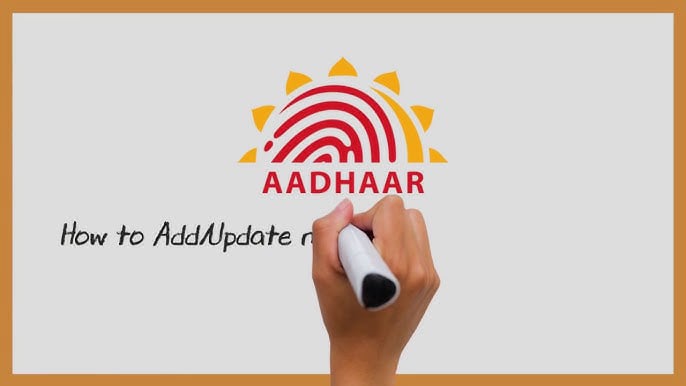

In an increasingly digital world, identity verification has become a cornerstone of accessing essential services, ensuring security, and maintaining trust in online and offline transactions. The Aadhaar card, issued by the Unique Identification Authority of India (UIDAI), plays a pivotal role in shaping India's digital identity landscape. As technology advances, the methods to download Aadhaar and verify identity digitally are evolving rapidly. This article explores the future prospects of Aadhaar card download mechanisms and the broader landscape of digital identity verification.
Evolution of Aadhaar Card Download Methods
Initially, the Aadhaar card was available solely as a physical document. Over time, the UIDAI introduced the e-Aadhaar, a digitally signed PDF version of the Aadhaar card, allowing individuals to access their identity details securely online. This transition marked a significant step toward embracing digital convenience and enhancing accessibility. The current process allows users to download their e-Aadhaar by entering their Aadhaar number or Enrolment ID, with robust encryption to protect user data.
Looking ahead, the process of Aadhaar card download is expected to become even more seamless and integrated with emerging technologies. Mobile apps and biometric authentication will likely play larger roles, enabling users to authenticate themselves with fingerprint or iris scans before retrieving their digital Aadhaar. This shift aims to reduce dependence on manual inputs and enhance security by verifying the individual’s identity through biometrics.
Enhanced Security Features in Digital Aadhaar
The security of digital identity documents remains paramount. Today’s e-Aadhaar files are password protected, combining elements such as a user’s name and birth year, and digitally signed to confirm authenticity. In the future, however, these security measures are set to advance considerably. With the integration of blockchain technology, digital Aadhaar cards could become immutable, tamper-proof records, ensuring that the document cannot be altered or forged.
Moreover, multi-factor authentication could become standard for Aadhaar downloads and verifications. This means users might need to confirm their identity through a combination of biometrics, OTPs (One-Time Passwords), and device-based authentication, making unauthorized access nearly impossible. Such robust security protocols will build greater trust among users and service providers relying on Aadhaar for identity verification.
Integration with Emerging Technologies
Artificial intelligence (AI) and machine learning are poised to transform how digital identities are verified. AI can analyze patterns and detect anomalies in real-time, identifying fraudulent attempts to download or misuse Aadhaar data. Similarly, biometric verification powered by AI will provide faster and more accurate identity confirmation.
In addition to AI, technologies like Near Field Communication (NFC) and QR codes embedded in digital Aadhaar cards could facilitate instant offline verification. For example, a simple scan of a QR code on a mobile device could instantly confirm the authenticity of an Aadhaar card without requiring an internet connection. This will be particularly beneficial in rural or remote areas where connectivity is limited.
The Role of Mobile and Digital Wallets
Mobile phones have become the primary device for accessing digital services, and their role in Aadhaar card download and verification will expand. Digital wallets that store Aadhaar information securely will offer users quick access to their digital identity, simplifying the verification process for government and private sector services.
Future mobile applications will likely integrate Aadhaar details with other identity documents, offering a unified digital identity platform. Users could seamlessly switch between services such as banking, healthcare, and government schemes, using their digital Aadhaar stored safely on their phones. This consolidation will enhance user experience by reducing the need to carry multiple physical documents or log in repeatedly across platforms.
Addressing Privacy Concerns
As Aadhaar and digital identity verification become more prevalent, privacy concerns have grown alongside. Protecting personal data while enabling easy access to identity verification is a delicate balance. The future will see stronger data privacy frameworks and more transparent consent mechanisms.
Users will have increased control over what portions of their Aadhaar data are shared and with whom. Selective disclosure techniques will allow individuals to share only the necessary information required for a particular service, reducing the risk of data misuse. Regulatory bodies will also tighten guidelines to ensure that Aadhaar data is stored and processed securely, with strict penalties for violations.
Expanding Applications Beyond Traditional Use
The Aadhaar card’s role is expanding far beyond government schemes and banking. Digital identity verification through Aadhaar is expected to become integral in sectors like education, healthcare, e-commerce, and even travel. For instance, educational institutions may use Aadhaar for verifying student identities during admissions or examinations, ensuring authenticity and reducing fraud.
In healthcare, Aadhaar-linked digital identities can streamline patient records, making it easier to access medical history securely and accurately. Similarly, in travel and hospitality, Aadhaar verification may expedite processes like hotel check-ins or flight boarding, reducing paperwork and wait times.
Challenges to Overcome
Despite the promising future, challenges remain. Infrastructure disparities, particularly in rural areas, can limit access to digital Aadhaar download services. Ensuring universal digital literacy and affordable internet access is critical to the inclusive success of Aadhaar-based identity verification.
Another concern is the potential for data breaches or misuse. Although enhanced security measures are in development, no system is entirely immune to cyber threats. Continuous investment in cybersecurity and public awareness campaigns will be essential to maintain confidence in Aadhaar’s digital future.
The Path Toward a Digitally Inclusive Society
The future of Aadhaar card download and digital identity verification reflects a broader vision of a digitally inclusive society where identity authentication is easy, secure, and widely accessible. By leveraging cutting-edge technologies and fostering trust through stringent security and privacy standards, Aadhaar can continue to serve as the foundation of India’s digital infrastructure.
Citizens will benefit from faster service delivery, reduced paperwork, and increased transparency. Government bodies and businesses alike will find Aadhaar-based verification to be a reliable tool for fraud prevention and operational efficiency. Ultimately, the ongoing evolution of Aadhaar and digital identity systems promises to empower individuals and transform the way identity is managed in the 21st century.